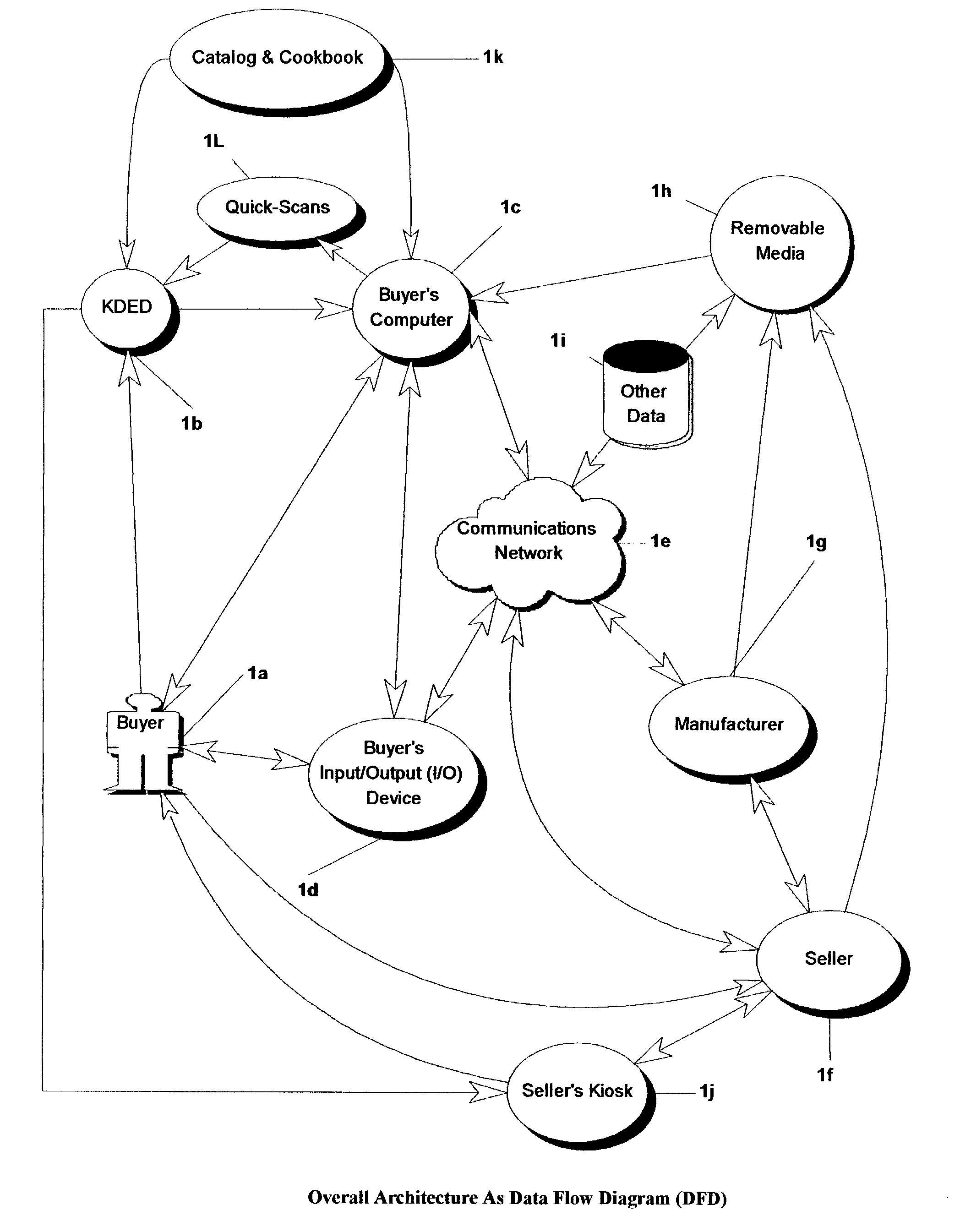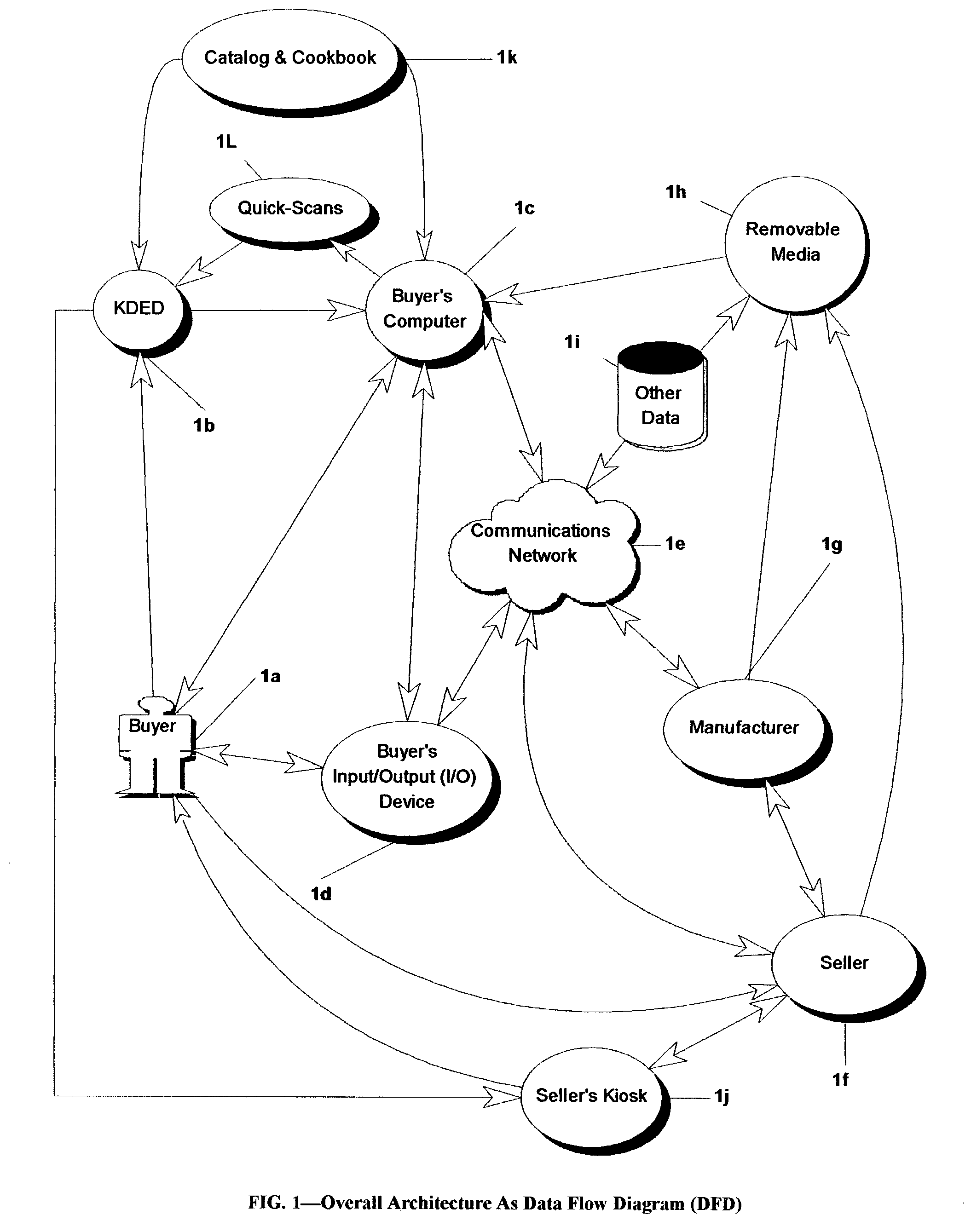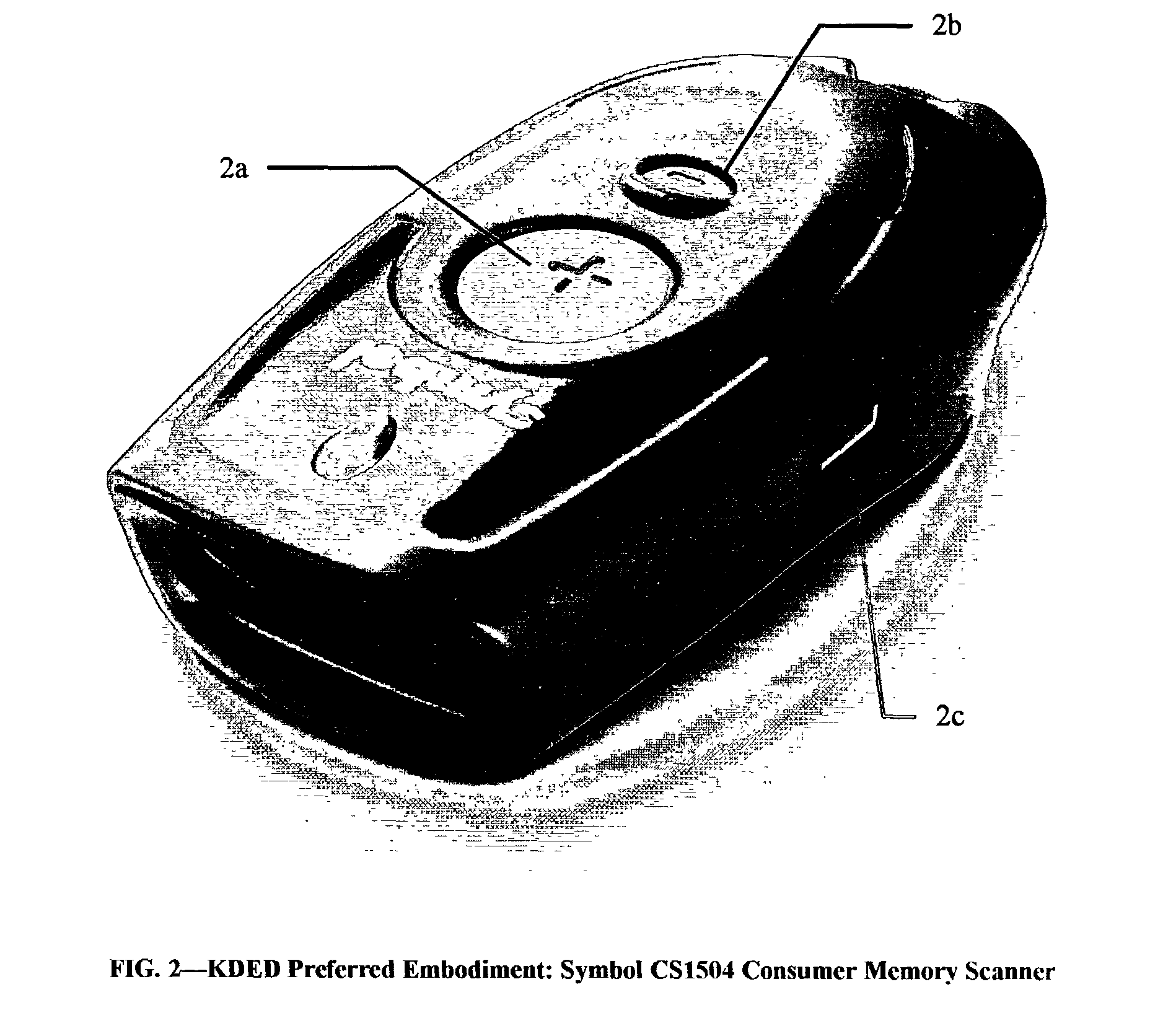Distributed personal automation and shopping method, apparatus, and process
a personal automation and shopping system technology, applied in the field of personal automation and shopping system, can solve the problems of limited number of portable barcode scanners, limited number of keyless data entry devices, limited application of industry and retail inventory control, etc., and achieve the effect of improving the speed and the dissemination of product information
- Summary
- Abstract
- Description
- Claims
- Application Information
AI Technical Summary
Problems solved by technology
Method used
Image
Examples
embodiment 1
Additional Operation
[0201]In additional embodiments of personal automation and shopping system like for the office supply market, Catalog & Cookbook 1k might include publishing projects (e.g. producing a resume, newsletter, or corporate annual report) where scanning that projects barcode or other identifying symbology / tag would add all the office supply products to the shopping list, and any equipment that wasn't already identified to the personal automation and shopping system by Buyer 1a as being available to Buyer 1a, instead of recipes. Similarly, if personal automation and shopping system is embodied for the construction industry, the Catalog & Cookbook 1k and the Removable Media 1h might contain building projects and instructions instead of cooking recipes and instructions. One important and novel aspect of the inventing being is superior flexibility, and easy adaptability to a wide variety of markets, where most of the changes occur in the product, project / recipe, and instruc...
PUM
 Login to View More
Login to View More Abstract
Description
Claims
Application Information
 Login to View More
Login to View More - R&D
- Intellectual Property
- Life Sciences
- Materials
- Tech Scout
- Unparalleled Data Quality
- Higher Quality Content
- 60% Fewer Hallucinations
Browse by: Latest US Patents, China's latest patents, Technical Efficacy Thesaurus, Application Domain, Technology Topic, Popular Technical Reports.
© 2025 PatSnap. All rights reserved.Legal|Privacy policy|Modern Slavery Act Transparency Statement|Sitemap|About US| Contact US: help@patsnap.com



